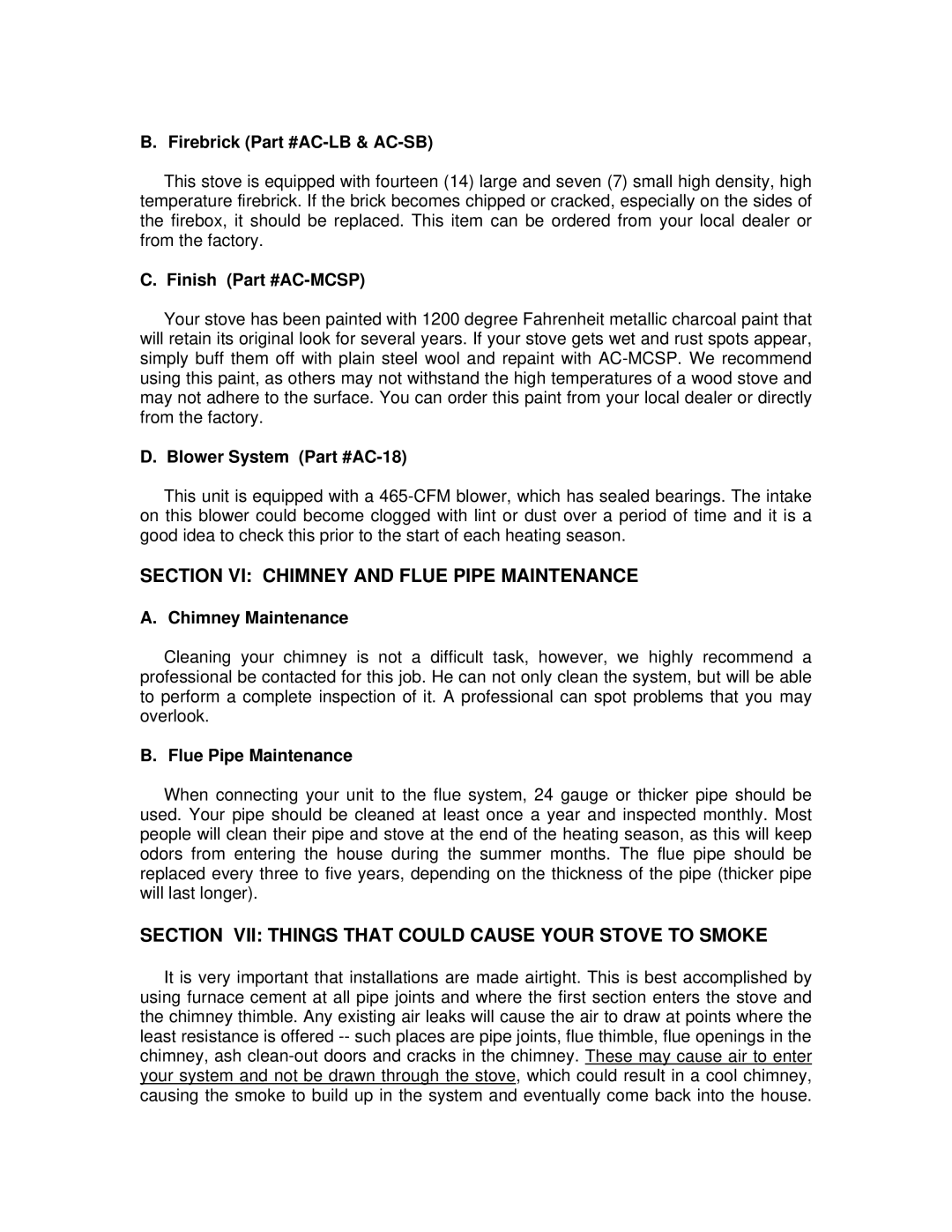24-G specifications
England's Stove Works 24-G is an impressive wood-burning stove that successfully combines traditional craftsmanship with innovative technology. This stove is designed to provide efficient heating, making it an attractive option for homeowners seeking a reliable source of warmth while also enjoying the aesthetic appeal of a classic wood stove.One of the main features of the 24-G is its impressive heating capacity. With the ability to generate up to 75,000 BTUs, this stove is capable of heating spaces of up to 1,800 square feet, making it suitable for a variety of home layouts. Its large firebox can accommodate logs up to 24 inches long, allowing for longer burn times and reduced need for frequent refueling.
Another significant aspect of the England’s Stove Works 24-G is its advanced air wash technology. This feature helps keep the glass door clean, enhancing the visual appeal of the fire while maximizing the viewing experience. The air wash system effectively reduces soot build-up, allowing users to enjoy a clear and unobstructed view of the flames.
The construction of the 24-G is another noteworthy feature, as it is built from heavy-duty steel. This ensures durability and longevity, making it a sensible investment for any home. The stove also boasts a cast iron door that not only adds to its traditional design but also enhances its heat retention capabilities.
In terms of efficiency, the 24-G excels with an overall efficiency rating of up to 78%. This efficiency translates into less wood consumption while still providing substantial heating. Such characteristics contribute to lower heating costs and a more environmentally-friendly option for homeowners.
The stove is also designed with a variety of adjustable air controls, allowing for precise regulation of combustion and heat output. This flexibility enables users to customize the heating experience according to their specific needs and preferences.
Overall, England’s Stove Works 24-G represents a perfect fusion of style, efficiency, and performance. Its robust design, advanced technologies, and heating capabilities make it an ideal choice for anyone looking to enhance their home with a reliable and beautiful wood-burning stove. Whether it’s for cozy family gatherings or simply enjoying the warmth during a cold winter evening, the 24-G stands out as a top contender in the market.
